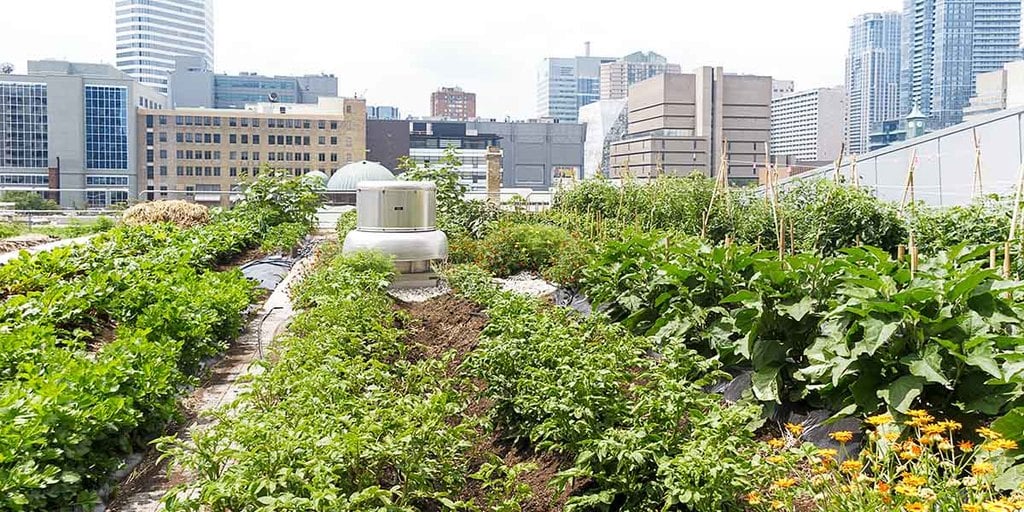About City Blooming
Wiki Article
City Blooming - Questions
Table of ContentsHow City Blooming can Save You Time, Stress, and Money.The Buzz on City BloomingA Biased View of City BloomingThe Best Strategy To Use For City Blooming3 Easy Facts About City Blooming Explained
Interested in growing food available for sale in the City of Chicago? Thinking concerning beginning a community yard? Adjustments to the Chicago Zoning Ordinance enable farming uses like community gardens and city ranches in numerous parts of the city. Below is a list of often asked inquiries regarding the guidelines and regulations that farmers should take into consideration when planning a city farming project.
The zoning amendment does not customize any various other codes managing composting, structure licenses, acquiring or leasing City owned residential or commercial property, business licenses or ecological contamination. There are existing codes that manage these problems and they remain in complete effect and may be appropriate to your project. Community yards are usually owned or taken care of by public entities, public companies or community-based companies and kept by volunteers.
Urban ranches grow food that is planned to be offered, either on a not-for-profit or for-profit basis. Due to their industrial purpose, city ranches need a business certificate.
The Ultimate Guide To City Blooming
Composting is enabled but just for plant material that is created and utilized on website. The quantity of compost material can not go beyond 25 cubic lawns at any type of offered time according to the criteria in 7-28-715 of the City's Municipal Code. Yes. Since the soil at many new yard sites needs modifying, garden compost, dirt, wood chips, or other products can be acquired to build or improve the expanding space - container and raised bed gardening etc..
If a structure license is called for then the hoophouse will certainly be thought about an accessory structure. You can learn more regarding the building permit requirements by getting in touch with the Department of Structures. The 25,000-square-foot dimension limitation is meant to avoid a solitary community garden from controling an offered block or diminishing the block's existing property or business character.
The limitation does not put on gardens found in Public Open Room (POS) areas. Can there be even more than one neighborhood yard that is 25,000 square feet on a single block? Yes. The size restriction applies to private yards, not to private blocks. No. Secure fencing is not required, however, gardens that have big parking locations might be called for to mount fence or other landscape design features.
City Blooming - An Overview
B1 & B2 districts call for that all industrial usage tasks be conducted inside your home. Is fence needed for city ranches? Fencings might be called for, along with landscaping and testing, for certain car park locations and exterior work or storage space locations depending on place and the specific activity taking place.Yes. Urban farms require building permits and zoning approvals prior to construction. Other forms of city evaluation might be required depending upon particular structures, activities, size, landscaping, licensing, public health and stormwater administration concerns. Much of these requirements are determined in the project design or permitting procedure, nonetheless, the candidate might be liable to independently recognize particular licenses or permits that may be needed.
The Division of Company Matters and Consumer Security can aid figure out the specific kind of business license that's required. Off road auto parking is required for the majority of commercial jobs in Chicago. The called for number of parking areas is based discover this on the number of workers working on website and not the square video footage of the expanding room.
Getting My City Blooming To Work

Yes. An urban farm can market compost product created on website, however, the operation must abide by the policies in 7-28-715 of the Chicago Municipal Code. Yes. Aquaponic systems are allowed inside your home on city ranches in numerous zoning areas. However, a zoning review and building permit is required in order to set up structures or systems and a business certificate is needed as described over.
Up to five hives or swarms of honey bees might be kept as an accessory usage. Nevertheless, beekeepers should register with the Illinois Department of Agriculture. For more information regarding the proposed zoning amendment you might speak to the Department of Housing and Economic Growth, Bureau of Preparation and Zoning at 312.744.8563.
Farming in cities and city locations An urban farm in Chicago. Urban farming refers to various practices of growing. https://my-store-faa5b0.creator-spring.com/, handling, and dispersing food in urban locations. The term additionally uses to the area tasks of animal husbandry, tank farming, beekeeping, and horticulture in a city context. Urban farming is differentiated from peri-urban agriculture, which happens in backwoods at the side of residential areas.
Things about City Blooming
, who look for to form social networks established on a shared values of nature and community holism. These networks can establish by way of formal institutional support, becoming incorporated into regional town preparation as a "change community" activity for sustainable urban development.The a lot more straight access to fresh vegetable, fruit, and meat items that may be understood with city farming can boost food security and food safety and security while reducing food miles, bring about lower greenhouse gas discharges, thus adding to environment modification mitigation. A few of the initial evidence of metropolitan agriculture originates from Mesopotamia.
Report this wiki page